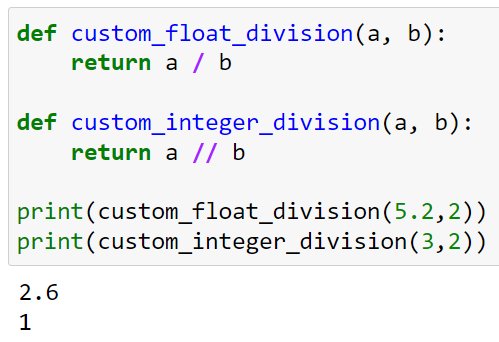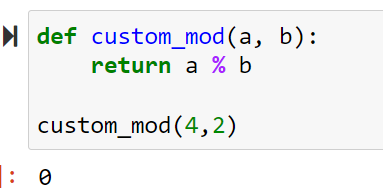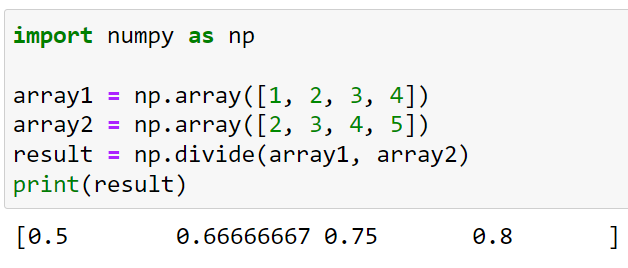Dividing numbers is one of the fundamental operations in programming, and Python offers straightforward methods to achieve this task. Python is a versatile language used in various domains such as data processing, web development, data analysis, and artificial intelligence. Mastering basic mathematical operations is essential for tackling more complex problems in these fields.
To perform division in Python, you can either use the single forward slash(/) for float division, or the double forward slash for integer division. You can also use NumPy’s library built-in function np.divide when dividing one array by the other. Furthermore, the % operator returns the remainder of a division.

This flexibility allows you to tailor your coding approach to specific problems. As we divide deeper into the topic, we’ll explore different ways to divide numbers in Python, including user input, built-in functions, and libraries.
Let’s get into it!
What Are the Types of Division in Python?
In Python, there are two primary types of division: float division and integer division.
Float division returns floating-point numbers, while integer division returns the quotient as a whole number.

These division types are performed using different operators:
- Float division (/): The / operator, or division operator, divides two numbers and returns a float value. It can handle both an integer and a floating-point number as input and output.
- Integer division (//): The // operator, or the floor division operator, performs integer division by dividing two numbers and returning the largest whole number less than or equal to the exact quotient. This is useful when you need the result to be an integer and not a decimal.
How to Perform Division With Basic Operators in Python
In this section, we’ll explore three basic division operators in Python: /, //, and %. These operators can handle different types of divisions and provide various results.

1. Division With / Operator
The / operator in Python performs float division.
When using this operator, the result will always be a floating-point value, even if both operands are integers.
This type of division is suitable when working with floating point arguments and ratios.
The following is an example of division with / operator:
result = 8 / 3
print(result)
The output of the above code will be:
# Output: 2.66666666666666652. Division With // Operator
The // operator will perform floor division or integer division.
This operator returns the largest integer less than or equal to the division result. It rounds down the result to the nearest integer.
The // operator works with both integer and float arguments alike.
The following is an example of division with // operator:
result1 = 7 // 3
print(result1) # Output: 2 (integer division)
result2 = 7.0 // 3.0
print(result2) # Output: 2.0 (floor division with floating point values)
This operator is useful when you need to work with whole numbers or count occurrences in a given range.
3. Division With % Operator
The % operator in Python, also called the modulo operator, returns the remainder of a division operation.
This operator can also identify if a number is evenly divisible by another or not.
The following is an example of division with % operator:
remainder = 9 % 4
print(remainder) # Output: 1The % operator can be used in various scenarios, such as determining if a number is odd or even.
For instance:
number = 13
if number % 2 == 0:
print("Even")
else:
print("Odd") # Output: Odd
The output will be odd since the remainder of 13 divided by 2 is not 0.
In summary, Python offers three main operators for performing different types of division: / for floating-point division, // for floor/integer division, and % for getting the remainder of a division operation.
By understanding the differences among these operators, you can proficiently handle various division-related tasks in Python.
Next, we’ll go over how you can create custom division functions in Python!
How to Create Custom Division Functions in Python
In Python, you can create custom division functions to handle various types of numbers and situations.

To define a basic division function, you can use the / operator for floating-point division or the // operator for integer division:
def custom_float_division(a, b):
return a / b
def custom_integer_division(a, b):
return a // bThese functions will work for positive and negative numbers, whole numbers, and floating-point values.
The output of the above code will be:

When you want to obtain the remainder after division, you can use the modulus operator %:
def custom_mod(a, b):
return a % bThe output of the above function will be:

We’ve covered a lot of ground, but we’re not done yet! In the next section, we’ll cover how you can perform division in Python using a library like NumPy.
How to Use NumPy for Division in Python
When dealing with large-scale data or requiring faster execution times, using efficient algorithms for division becomes crucial.

Python offers various libraries like NumPy or SciPy that can optimize numerical operations.
For instance, with NumPy, you can utilize the numpy.divide() function to perform element-wise division on Python lists or arrays.
The following is an example of using NumPy for division:
import numpy as np
array1 = np.array([1, 2, 3, 4])
array2 = np.array([2, 3, 4, 5])
result = np.divide(array1, array2)
The output will be:

You can achieve a higher performance in your Python division tasks by fine-tuning your functions.
To learn more about functions in Python, check the following video out:
Final Thoughts
As we wrap up this discussion on division in Python, it’s important for you to realize why mastering this basic yet vital operation matters. Proficiency in Python’s different division types expands your toolkit and aids in writing more efficient, versatile code.
Additionally, understanding these concepts strengthens your foundation in Python. This will allow you to grasp more complex topics with ease.
Happy coding!
Frequently Asked Questions
In this section, you’ll find some frequently asked questions that you may have when working with divisions in Python.

What is the Difference Between Float and Integer Division in Python?
Integer division returns the largest possible integer from the division operation. For example, 5 // 2 gives 2, truncating the decimal part.
Float Division (/) yields the exact quotient that includes decimals.
For example, 5 / 2 gives 2.5.
What is the Example of Float Division in Python?
Float division in Python returns a float value as a result. To perform float division, you can simply use the / operator.
For instance:
result = 5 / 2
print(result) # Output: 2.5
In this example, we divide 5 by 2, resulting in a floating point of 2.5.
What is Variable Division Method in Python?
To divide variables in Python, you can use the same division operators (/ or //). If you have two variables, a and b, and you want to obtain the quotient, you can do the following:
a = 10
b = 3
quotient = a / b
print(quotient) # Output: 3.3333333333333335
What is the Difference between // and / in Python?
In Python, there are two division operators: / and //.
The / operator performs float division, whereas the // operator performs integer or floor division.
For example:
float_division = 7 / 3
print(float_division) # Output: 2.3333333333333335
integer_division = 7 // 3
print(integer_division) # Output: 2
What is the Remainder Division Technique in Python?
To get the remainder of a division operation in Python, you can use the modulus operator %. This operator returns the remainder after dividing the left-hand operand by the right-hand operand.
For instance:
remainder = 17 % 5
print(remainder) # Output: 2
What is the Example of Integer Division in Python?
To perform integer division (also known as floor division) in Python, use the // operator. This operator returns the largest integer not greater than the exact division result.
For instance:
integer_division = 8 // 3
print(integer_division) # Output: 2







